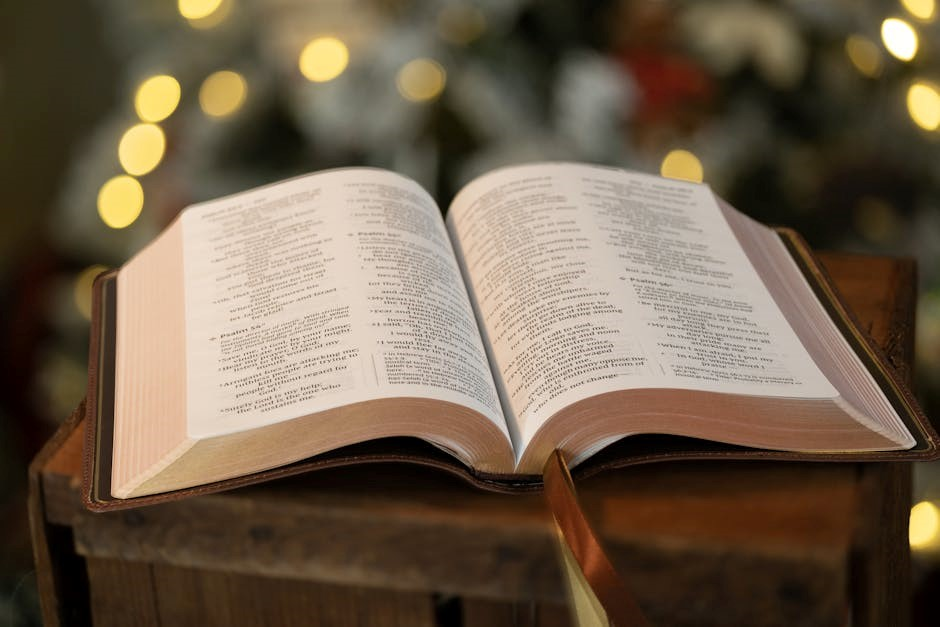the lord’s prayer study guide pdf
Welcome to this comprehensive study guide on the Lord’s Prayer‚ designed to deepen your understanding and application of this foundational Christian prayer; Perfect for personal or group study‚ this guide offers theological insights‚ practical applications‚ and reflective exercises to enhance your prayer life. Explore the rich meaning behind each petition‚ and discover how to integrate this prayer into your daily devotionals and worship practices. Whether you’re a seasoned believer or just beginning your faith journey‚ this guide will serve as a valuable resource for spiritual growth and reflection.
1.1 Overview of the Study Guide
This study guide provides a structured approach to understanding the Lord’s Prayer‚ offering a mix of biblical context‚ theological insights‚ and practical applications. It is divided into sections that explore the prayer’s historical background‚ its structure‚ and its significance in Christian faith. The guide includes discussions on forgiveness‚ God’s kingdom‚ and daily bread‚ along with resources for further study. Designed for both individual and group use‚ it features reflective prompts‚ Bible verses‚ and actionable steps to deepen prayer life. Whether for personal devotion or group worship‚ this guide is a valuable tool for spiritual growth and reflection.
1.2 Importance of the Lord’s Prayer in Christian Faith
The Lord’s Prayer holds a central place in Christian faith‚ serving as a divine model for communication with God. Taught by Jesus Himself‚ it encapsulates key elements of prayer‚ including praise‚ submission to God’s will‚ requests for provision‚ forgiveness‚ and protection from evil. This prayer is not just a formula but a profound expression of a believer’s relationship with God. Its universal use in worship and personal devotion underscores its significance. Memorized and recited across generations and denominations‚ the Lord’s Prayer unites Christians worldwide‚ offering a timeless guide for prayer and spiritual growth‚ drawing believers closer to God’s heart and will.

Historical Background of the Lord’s Prayer
The Lord’s Prayer originates from Jesus’ teachings‚ recorded in the Gospels of Matthew and Luke. It reflects His Jewish roots and the cultural context of 1st-century Palestine‚ emphasizing a personal relationship with God. This prayer has become a cornerstone of Christian worship‚ shaping devotion and communal prayer across centuries. Its enduring relevance lies in its timeless themes of reverence‚ surrender‚ and trust in God’s providence.
2.1 Biblical Context of the Prayer
The Lord’s Prayer is recorded in the Gospels of Matthew (6:9-13) and Luke (11:2-4)‚ with slight variations. It was taught by Jesus during the Sermon on the Mount and in response to His disciples’ request to teach them how to pray. The prayer reflects Jewish prayer patterns and emphasizes a personal‚ intimate relationship with God as Father. Its structure—praising God‚ seeking His will‚ and asking for daily needs and forgiveness—mirrors ancient Jewish prayers. This prayer is deeply rooted in biblical theology‚ serving as a model for Christians to align their prayers with God’s nature and purposes‚ fostering reverence and trust in Him.
2.2 Jesus’ Teaching on Prayer
Jesus’ teaching on prayer‚ as seen in the Lord’s Prayer‚ emphasizes a personal and intimate relationship with God. He instructed His disciples to address God as “Father‚” reflecting a deep sense of closeness and trust. The prayer‚ taught during the Sermon on the Mount (Matthew 6:9-13) and in response to the disciples’ request (Luke 11:2-4)‚ serves as a model for all Christian prayer. Jesus stressed sincerity and authenticity‚ warning against hypocrisy and meaningless repetition. His teaching highlights the importance of aligning one’s prayers with God’s will‚ seeking daily provision‚ and asking for forgiveness. This prayer continues to guide believers in their communication with God‚ fostering trust‚ reverence‚ and intimacy.

Structure and Components of the Lord’s Prayer
The Lord’s Prayer begins with addressing God as “Our Father in Heaven‚” followed by petitions for His name to be hallowed‚ His kingdom to come‚ and His will to be done. It then seeks daily bread‚ forgiveness‚ and protection from evil‚ concluding with a doxology.
3.1 “Our Father in Heaven‚ Hallowed Be Your Name”
The opening phrase‚ “Our Father in Heaven‚ Hallowed Be Your Name‚” sets the tone for the prayer‚ emphasizing God’s paternal relationship with believers. It reflects intimacy and reverence‚ acknowledging God’s holiness and sovereignty. This petition seeks to honor God’s name‚ recognizing His divine nature and desiring that His name be sanctified in all creation. It invites believers to approach God with humility and awe‚ fostering a deeper understanding of His majesty and love. This phrase teaches us to prioritize God’s glory and align our hearts with His divine will‚ setting a foundational tone for the rest of the prayer.
3.2 “Your Kingdom Come‚ Your Will Be Done”
This petition expresses a deep longing for God’s kingdom to be established on earth and His will to be fulfilled in the lives of believers. It reflects a desire for divine sovereignty to reign supreme‚ aligning human actions with heavenly purposes. By praying “Your Kingdom Come‚” believers acknowledge God’s authority and eagerly await His redemption and reign. “Your Will Be Done” emphasizes surrender to God’s plan‚ trusting in His goodness and wisdom. This part of the prayer teaches believers to prioritize God’s agenda over personal desires‚ fostering a life of obedience and alignment with His divine purposes‚ both now and eternally.
3.3 “Give Us This Day Our Daily Bread”
This petition focuses on trusting God for daily provisions‚ emphasizing reliance on His faithfulness. It teaches believers to seek physical and spiritual sustenance‚ recognizing God as the ultimate provider. The phrase “daily bread” symbolizes basic needs‚ encouraging gratitude for what is essential. It also reflects a posture of humility and dependence on God‚ aligning with Jesus’ teaching to prioritize spiritual over material wealth. By praying this‚ Christians affirm that true satisfaction comes from God‚ fostering a mindset of contentment and trust in His provision for both present and future needs‚ while seeking His kingdom above all else. This prayer cultivates a life of gratitude and faith.
3.4 “And Forgive Us Our Debts‚ As We Also Have Forgiven Our Debtors”
This petition highlights the reciprocal nature of forgiveness‚ emphasizing that receiving God’s mercy is tied to our willingness to extend it to others. It underscores the importance of humility‚ acknowledging our own shortcomings and the need for divine pardon. By asking for forgiveness‚ believers recognize the gravity of sin and the necessity of reconciliation with God and others. The phrase also challenges Christians to cultivate a spirit of grace and compassion‚ mirroring God’s forgiveness in their interactions. This section of the prayer serves as a reminder of the transformative power of forgiveness in healing relationships and fostering spiritual growth‚ aligning with Jesus’ teachings on mercy and love.
3.5 “And Do Not Lead Us into Temptation‚ But Deliver Us from Evil”
This final petition seeks divine protection from the snares of sin and evil‚ acknowledging human vulnerability to temptation. It reflects a dependence on God’s strength to resist moral failures and spiritual adversaries. The prayer asks for deliverance from both internal struggles and external evils‚ emphasizing trust in God’s sovereignty and grace. By requesting protection‚ believers affirm their reliance on divine guidance and the need for constant vigilance against evil influences. This section also serves as a reminder of the ongoing spiritual battle and the importance of seeking God’s intervention to navigate life’s challenges with integrity and faith. It underscores the necessity of humility and trust in divine deliverance.

Theological Insights and Interpretations
This section explores the deep theological themes of the Lord’s Prayer‚ such as forgiveness‚ divine sovereignty‚ and spiritual warfare‚ offering insights into its profound spiritual significance and application.
4.1 The Prayer as a Model for Christian Prayer Life
The Lord’s Prayer serves as a timeless model for Christian prayer‚ offering a balanced and profound framework for communicating with God. It begins with adoration (“Our Father in heaven‚ hallowed be your name”)‚ emphasizing reverence and intimacy. The prayer then seeks God’s will (“Your kingdom come‚ your will be done”)‚ aligning human desires with divine purposes. Requests for daily bread and forgiveness reflect dependence on God’s provision and mercy. Finally‚ it concludes with a plea for protection from evil‚ demonstrating trust in God’s sovereignty. This structure teaches believers to prioritize God’s glory‚ submit to His will‚ and seek His grace‚ making it a universal guide for prayer.
4.2 The Role of Forgiveness in the Prayer
The Lord’s Prayer underscores the vital role of forgiveness in the Christian life through the phrase‚ “And forgive us our debts‚ as we also have forgiven our debtors.” This petition highlights the reciprocal nature of forgiveness‚ where believers seek pardon from God while committing to extend mercy to others. Forgiveness is not merely a request but a responsibility‚ reflecting Christ’s teachings on the importance of a forgiving heart. By including this element‚ Jesus emphasizes that spiritual freedom and reconciliation with God are closely tied to our willingness to forgive others. This dual aspect of forgiveness fosters humility‚ healing‚ and restored relationships.
4.3 The Concept of God’s Kingdom and Will
The Lord’s Prayer introduces the concept of God’s Kingdom and Will through the petition‚ “Your Kingdom come‚ Your will be done‚ on earth as it is in heaven.” This reflects a longing for God’s divine rule to manifest on earth‚ aligning human desires with His perfect plan. The prayer emphasizes submission to God’s sovereignty‚ recognizing His will as holy and just. It encourages believers to pray for the fulfillment of His purposes‚ both in their lives and globally‚ while trusting in His timing and wisdom. This petition serves as a reminder of the ultimate hope for God’s Kingdom to fully reign‚ bringing eternal peace and righteousness.

Practical Applications of the Lord’s Prayer
This section explores how to apply the Lord’s Prayer in daily life‚ offering practical strategies for personal devotion‚ group worship‚ and teaching children‚ enhancing spiritual growth and community engagement.
5.1 Using the Prayer in Personal Devotions
Incorporating the Lord’s Prayer into personal devotions enriches your spiritual practice. Start by reciting it slowly‚ reflecting on each phrase to connect deeply with God. Use it as a framework for structured prayer‚ ensuring balance in your communication with Him. For example‚ begin with worship (“Hallowed be your name”)‚ move to surrender (“Your will be done”)‚ then seek provision (“Give us this day our daily bread”). Conclude with confession and protection (“Forgive us… deliver us from evil”). This methodical approach fosters intimacy and aligns your heart with divine purposes‚ making each devotion meaningful and transformative.
5.2 Incorporating the Prayer into Group Worship
The Lord’s Prayer is a powerful tool for unifying believers in group worship. Recite it collectively during services or meetings to foster a sense of community and shared faith. Use it as a liturgical element‚ such as a call to worship or a response to God’s Word. Its structure allows for easy adaptation into songs‚ chants‚ or responsive readings‚ making it accessible for diverse worship styles. It also serves as a model for corporate prayer‚ guiding the group to focus on God’s glory‚ kingdom‚ and provision. This shared practice strengthens collective faith and aligns hearts with God’s will‚ creating a meaningful worship experience.
5.3 Teaching the Prayer to Children and Youth
Teaching the Lord’s Prayer to children and youth is essential for nurturing their spiritual growth. Use age-appropriate resources like crossword puzzles‚ Bible study guides‚ and interactive activities to make it engaging. Simplify the prayer’s meaning‚ emphasizing its structure and significance. Encourage memorization through repetition and song. Discuss each petition in relatable terms‚ helping them connect with God’s will‚ forgiveness‚ and provision. Incorporate visual aids and group discussions to deepen understanding. Make it practical by showing how the prayer applies to their daily lives‚ fostering a lifelong habit of meaningful prayer. This foundational teaching will guide their spiritual development and faith journey.

Resources for Further Study
Explore Bible commentaries‚ study guides‚ and online PDF materials for deeper insights into the Lord’s Prayer. Utilize recommended books and sermons to enhance your understanding and application of this sacred prayer in your spiritual journey.
6.1 Recommended Bible Commentaries and Study Guides
Enhance your study with renowned Bible commentaries and guides that offer profound insights into the Lord’s Prayer. Works like Beth Moore’s “Praying God’s Word” and “The Lord and His Prayer” by Wright provide theological depth. Luther’s Small Catechism includes a section dedicated to the prayer‚ making it a valuable resource. Additionally‚ “The Dig for Kids” simplifies the prayer for younger learners. These resources‚ available in PDF and online formats‚ offer practical applications and reflective exercises. They are perfect for personal or group study‚ helping to deepen your understanding and application of the Lord’s Prayer in daily life.
6.2 Online Resources and PDF Materials
Discover a wealth of online resources and PDF materials to enrich your study of the Lord’s Prayer. Websites offer free downloadable guides‚ such as “The Lord’s Prayer Lessons for Youth” and “The Dig for Kids‚” designed for interactive learning. PDFs like “The Lord’s Prayer Study Guide” provide detailed insights‚ practical applications‚ and reflective exercises. Many resources include printable versions for personal or group use‚ making them ideal for worship and devotional settings. These materials are easily accessible online‚ offering convenient tools to deepen your understanding and application of the prayer in daily life‚ fostering spiritual growth and communal worship experiences.
6.3 Sermons and Teachings on the Lord’s Prayer
Engage with sermons and teachings that delve into the profound meaning of the Lord’s Prayer‚ offering insights into its theological significance and practical application. These resources‚ often available as PDFs or online materials‚ provide in-depth analyses of each petition‚ helping to illuminate its relevance in daily life and worship. Many teachings emphasize the prayer’s role as a model for Christian devotion‚ highlighting its connection to forgiveness‚ God’s kingdom‚ and spiritual growth. Whether through video sermons‚ written commentaries‚ or interactive studies‚ these teachings equip believers to deepen their understanding and integrate the Lord’s Prayer into their personal and communal faith practices effectively.

Cultural and Linguistic Variations
Explore how the Lord’s Prayer is translated and culturally adapted across languages‚ preserving its spiritual essence while reflecting diverse linguistic and cultural traditions worldwide.
7.1 Translations of the Lord’s Prayer Across Languages
The Lord’s Prayer is universally revered‚ with translations in countless languages‚ ensuring its message resonates across cultures. From Latin to modern tongues like Spanish‚ French‚ and Mandarin‚ the prayer’s essence remains intact. Each translation preserves the original intent while reflecting linguistic nuances‚ making it accessible to diverse communities. For instance‚ the Latin “Pater Noster” and the Spanish “Padre Nuestro” maintain the prayer’s spiritual depth. These translations are invaluable for personal devotion‚ group worship‚ and cross-cultural outreach‚ fostering unity in faith and practice. They highlight the prayer’s timeless relevance and its ability to transcend linguistic barriers‚ uniting believers worldwide in shared devotion.
7.2 Cultural Interpretations and Adaptations
The Lord’s Prayer has been interpreted and adapted across various cultures‚ reflecting local traditions and spiritual practices. In some African communities‚ it is sung with rhythmic melodies during liturgical services‚ while in Asian cultures‚ it is often calligraphed and meditated upon. Indigenous groups may incorporate the prayer into rituals‚ such as smudging ceremonies‚ blending it with native spiritual practices. These adaptations highlight the prayer’s universality‚ as its core message resonates across diverse cultural landscapes. Such interpretations not only preserve the prayer’s essence but also make it relatable to people from all walks of life‚ ensuring its relevance in a global context.

The Lord’s Prayer in Liturgical Contexts
The Lord’s Prayer is a cornerstone in Christian liturgy‚ featured prominently in church services‚ Eucharistic rites‚ and communal worship. Its recitation fosters unity and spiritual connection.
8.1 Use in Church Services and Liturgies
The Lord’s Prayer is integral to Christian worship‚ often recited during Eucharistic celebrations‚ baptisms‚ and other sacred rites. Its inclusion in liturgical services emphasizes communal prayer and unity. Many denominations incorporate it into their structured worship‚ reflecting its universal relevance. In some traditions‚ it is recited weekly‚ reinforcing its significance. The prayer’s structure aligns with liturgical themes of reverence‚ petition‚ and thanksgiving‚ making it a natural fit for congregational worship. Its prominence in church services underscores its role in shaping Christian spirituality and fostering a collective dialogue with God.
8.2 The Prayer in Different Christian Traditions
The Lord’s Prayer is a unifying element across Christian traditions‚ though its usage varies. In Catholic liturgy‚ it is central to the Mass and Rosary. Protestant churches often recite it during Sunday services‚ emphasizing its biblical roots. The Eastern Orthodox Church incorporates it into divine liturgy‚ sometimes chanted. Some traditions‚ like Anglicanism‚ use it in structured worship‚ while Evangelical churches may adapt it for contemporary settings. Despite these variations‚ the prayer remains a shared spiritual practice‚ reflecting the universal call to reverence‚ petition‚ and trust in God. Its adaptability across traditions underscores its enduring relevance in Christian worship worldwide.

The Lord’s Prayer in Modern Contexts
The Lord’s Prayer remains a vital spiritual tool in contemporary life‚ offering guidance for personal devotion‚ community worship‚ and social engagement. Its timeless wisdom resonates in modern contexts‚ providing a framework for addressing today’s challenges through faith and prayer.
9.1 Contemporary Applications of the Prayer

In today’s fast-paced world‚ the Lord’s Prayer offers timeless relevance. It serves as a guide for personal devotion‚ fostering mindfulness and intimacy with God. Many use it in daily reflections‚ finding comfort in its structure and depth. Communities incorporate the prayer into social initiatives‚ praying for justice and peace. Its themes of forgiveness and trust resonate in modern relationships‚ encouraging reconciliation and humility. Digital platforms also feature the prayer‚ reaching global audiences and inspiring new generations. Whether in private moments or collective worship‚ the Lord’s Prayer remains a powerful tool for navigating life’s challenges with faith and purpose.
9.2 The Prayer in Social and Community Settings
The Lord’s Prayer is a unifying force in social and community contexts‚ fostering togetherness and shared spiritual purpose. It is often recited in group worship services‚ charity events‚ and public gatherings‚ emphasizing collective humility and intercession. Communities use the prayer to address social issues‚ such as injustice and inequality‚ while seeking divine guidance. Its universal appeal allows it to transcend denominational boundaries‚ making it a common language for diverse groups. In addition‚ the prayer is frequently incorporated into community initiatives‚ encouraging forgiveness‚ reconciliation‚ and mutual support. Its adaptability makes it a powerful tool for communal reflection and action in modern society.
The Lord’s Prayer is a timeless guide for Christian living‚ bridging tradition and modern life. Its profound lessons on forgiveness‚ God’s will‚ and community continue to inspire reflection and action‚ fostering deeper faith and unity among believers.
10.1 Summary of Key Points
This study guide explores the Lord’s Prayer’s structure‚ theological depth‚ and practical applications. It emphasizes the prayer as a model for Christian prayer life‚ highlighting themes of forgiveness‚ God’s will‚ and Kingdom values. Practical tips for personal devotion and group worship are provided‚ along with resources for further study. Cultural and linguistic variations of the prayer are discussed‚ showcasing its universal relevance. The guide also addresses the prayer’s role in liturgical and modern contexts‚ encouraging believers to reflect on its timeless wisdom. Ultimately‚ the Lord’s Prayer remains a cornerstone of Christian faith‚ inspiring spiritual growth and fostering deeper communion with God.
10.2 Encouragement for Ongoing Study and Reflection
As you conclude this study guide‚ remember that the Lord’s Prayer is a lifelong journey of spiritual growth. Continue to reflect on its teachings‚ integrating them into your daily prayers and actions. Set aside time for personal reflection‚ journaling‚ or discussing insights with fellow believers. Explore additional resources‚ such as Bible commentaries or sermons‚ to deepen your understanding. Allow the prayer’s themes of forgiveness‚ trust‚ and surrender to shape your heart and mind. May this guide be a foundation for ongoing prayerful exploration‚ drawing you closer to God and fostering a deeper‚ transformative faith.